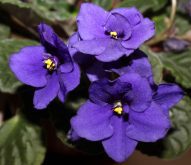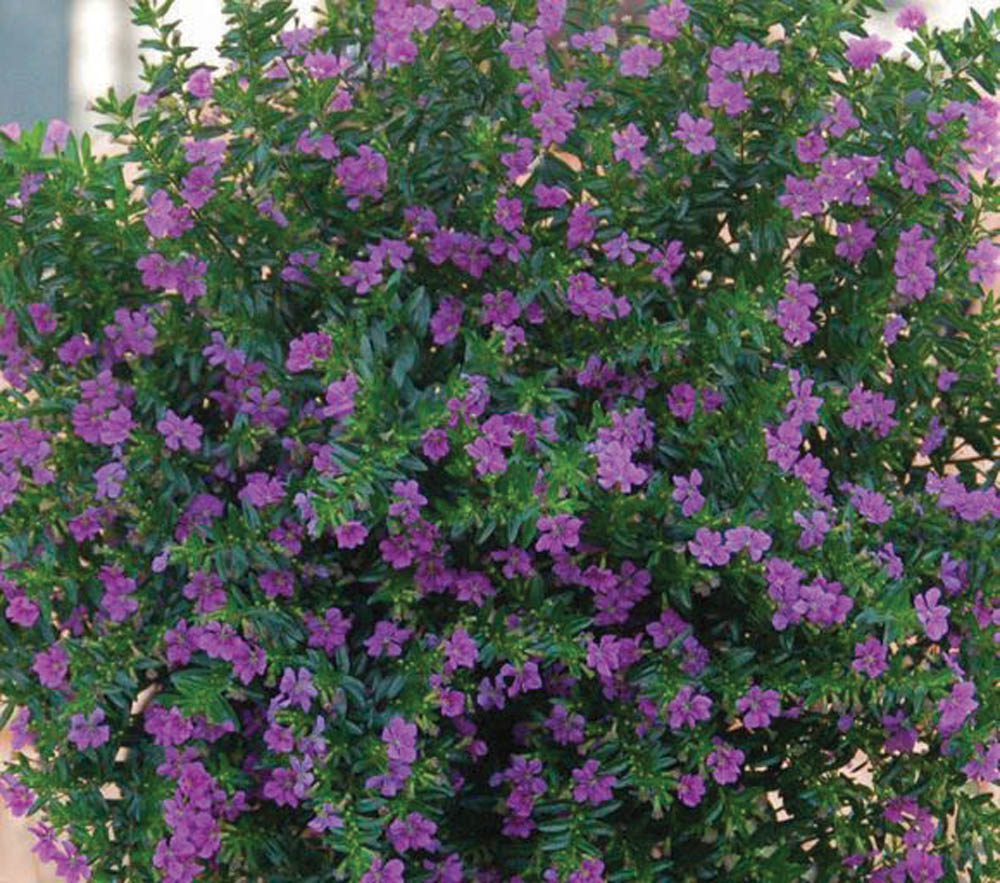Living ground covers are more naturalistic than inorganic ones, and are useful not only in the outdoor garden but indoors as well. Many of us have large, indoor foliage floor plants like scheffleras, palms, dieffenbachias, dracaenas, and fig trees, sometimes using sphagnum moss or raffia to cover the soil surface, but there are plants that will serve this purpose. They must, however, be tolerant of low light levels as many of these large foliage plants are low-light plants. A good one to use in this way is clubmoss (Selaginella), which is satisfied with bright, indirect light. Clubmoss has lush green foliage that forms a dense mat on the soil surface. The creeping stems root as they come into contact with the soil and soon the entire surface is covered with mounds of textured greenery. The plant is quite fast growing and may begin to tumble over the sides of the container, but can easily be contained by pruning, with the terminal shoots being used to create new plants. The shoots root easily when inserted into damp soil.
Read Also

Growing garlic by the thousands in Manitoba
Rebekah Sandford planted 28,000 garlic plants by hand last year on her operation near St. Malo, Manitoba. She’s one of the few local garlic growers in the province and on the Prairies.
Clubmoss likes warm temperatures, doesn’t like cold drafts, and likes high humidity. The proximity of the large foliage plant will help to increase the humidity, but misting will also be beneficial.
Clubmoss also makes a great terrarium plant, since these are enclosed in glass and have lots of other plants right beside them, creating a high-humidity environment. Because it is an enclosed ecosystem, the frequency of watering is greatly reduced, making these plant display units quite low maintenance.
Another use for this attractive plant is an addition to a fairy garden or a dish garden. Again, its purpose is to fill in empty spaces and cover bare soil. When used in such arrangements it can easily be misted to prevent it from browning. Small decorative objects commonly used in such arrangements can be set on top of the moss without causing harm.
The soil in which clubmoss is planted should be kept lightly moist. It will deteriorate if the soil is kept sodden and will turn brown if too dry. It can be used alone in a container. A six-inch pot will soon become a mound of bright-green foliage, making a perfect addition to a plant grouping. A larger container of clubmoss can be used as a tabletop specimen. The foliage will become thick and grow over the edges of the container, creating an attractive display of ferny greenery. Setting the display on a pebble tray will increase the humidity around the plant.
Whether it is used as a ground cover beneath large indoor plants, in a terrarium or dish, as a stand-alone plant, or in combination with other plants in a grouping, clubmoss will add a unique feature to the interior landscape.



















